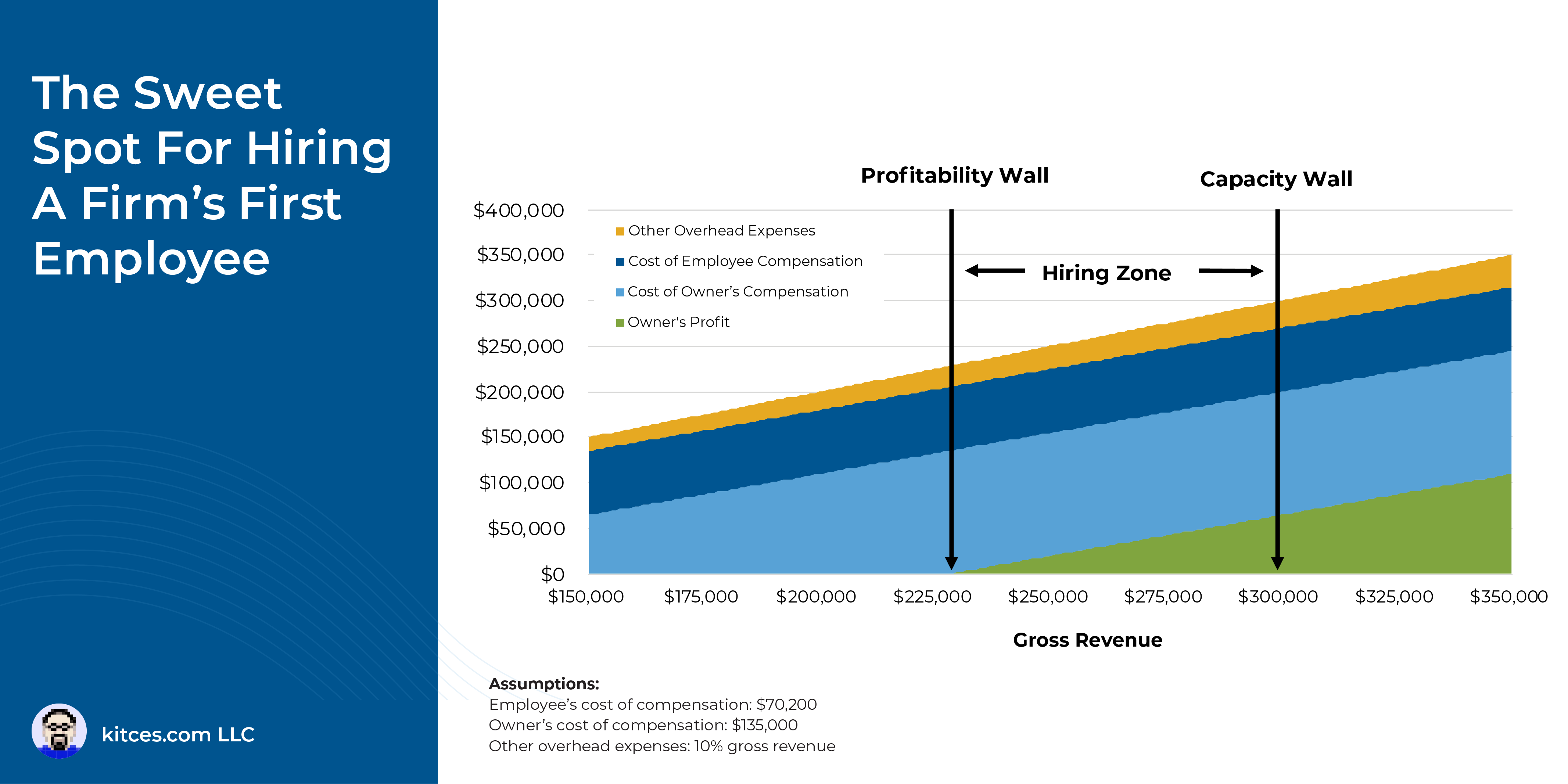Many monetary advisors who launch solo advisory corporations achieve this with the intention of including extra staff as soon as the agency turns into sufficiently big to assist them. And whereas conceptually it is sensible that the agency will likely be prepared to rent its first worker in some unspecified time in the future, in apply, there usually is not plenty of readability about the precise time to really make an preliminary rent.
On this put up, Kitces Senior Monetary Planning Nerd Ben Henry-Moreland affords a framework that solo advisory agency house owners can use to determine when their agency will likely be able to make an preliminary rent, based mostly on knowledge from Kitces Analysis on Advisor Productiveness and Advisor Wellbeing in addition to trade benchmarking research on advisor capability.
There are 2 factors in a agency’s development journey that may assist solo advisors determine when to make their first rent. One is the advisor’s ‘capability wall’, which is the purpose the place the advisor has reached their most shopper workload and wishes to rent assist with a view to develop the agency additional. Business benchmarking knowledge means that many advisors attain this wall someplace between 30–40 shoppers, or $220,000–$320,000 in income. And whereas advisors will typically use their capability wall as a suggestion for when to rent, ready till the advisor is close to (or already at) their capability – and due to this fact has restricted time outdoors of their present duties of serving shoppers and operating the agency – to undergo the method of looking for, hiring, and onboarding a brand new worker – could make hiring fairly painful, a minimum of within the brief time period.
So on one hand, it often makes extra sense for solo advisors to rent nicely earlier than they attain their capability, however alternatively, hiring too early (and earlier than the agency has sufficient income to assist the expense of a full- and even part-time worker) could cause a monetary pressure on the agency and the proprietor/advisor, whose take-home revenue is immediately impacted by the choice to rent. This brings up the opposite key level within the agency’s development journey, which is the ‘profitability wall’: the quantity of income a agency must earn to have the ability to rent an worker whereas nonetheless adequately compensating the proprietor/advisor. This quantity varies based mostly on the agency proprietor’s objectives, however a tough yardstick might be the quantity the advisor would earn in the event that they had been working as an worker at one other agency. Including this quantity to the price of compensating the brand new worker (together with wage plus payroll tax and advantages), plus the agency’s different overhead bills, offers the agency’s profitability wall and an estimate of the purpose within the agency’s development the place it might make an preliminary rent.
Placing these 2 factors – the profitability and capability partitions – collectively offers an estimate of the advisory agency’s ‘hiring zone’, which agency house owners can calculate to search out the vary (in {dollars} of income) the place it is sensible to rent a primary worker. Moreover, it might additionally assist agency house owners determine whether or not it even is sensible to rent to start with, as a result of a agency’s profitability wall that’s too near, or increased than, its capability wall (that means that the agency proprietor ‘wants’ to make a rent earlier than their agency even has the monetary capability to take action) can point out that the agency proprietor ought to as an alternative deal with boosting their capability – both by streamlining their processes or rising their charges – earlier than specializing in hiring outdoors assist.
The important thing level, ultimately, is that whereas every agency proprietor has their very own particular person roadmap to hiring, they’ll inevitably have to navigate between the profitability wall and the capability wall with a view to make a easy transition from a solo agency to at least one with 1 (or extra) staff. And reasonably than guessing when the precise second to rent will arrive, taking a while to run the numbers upfront will help advisors plan out the hiring course of that can work greatest for them – which ought to make each the advisor and the brand new worker happier in the long term!

